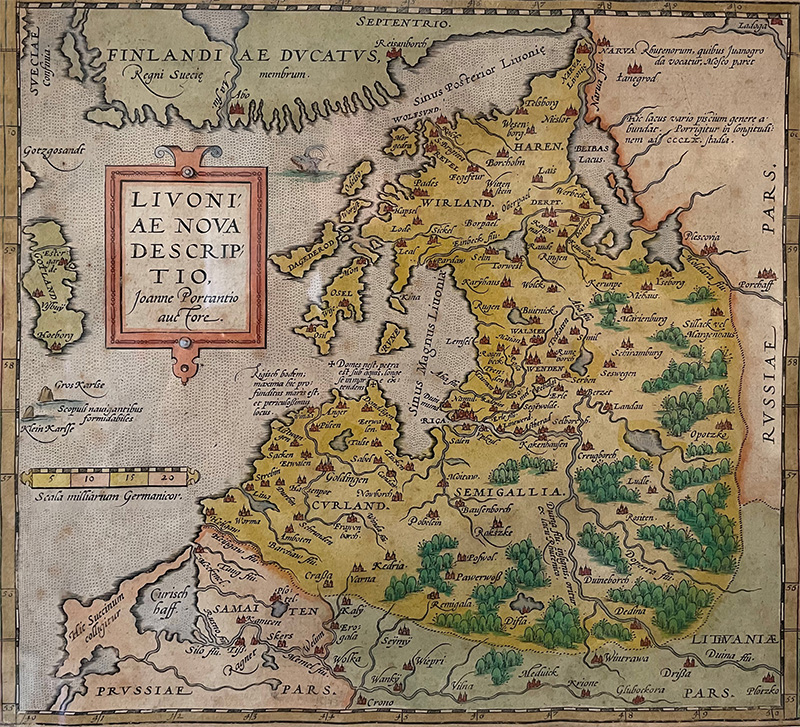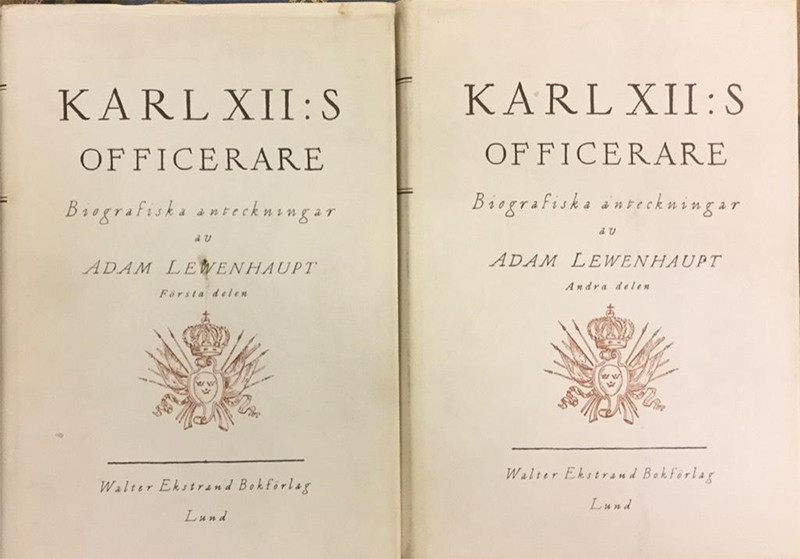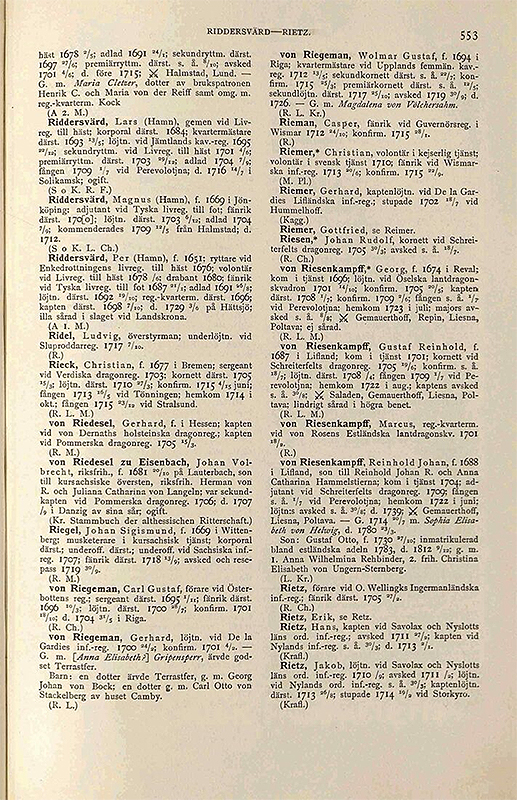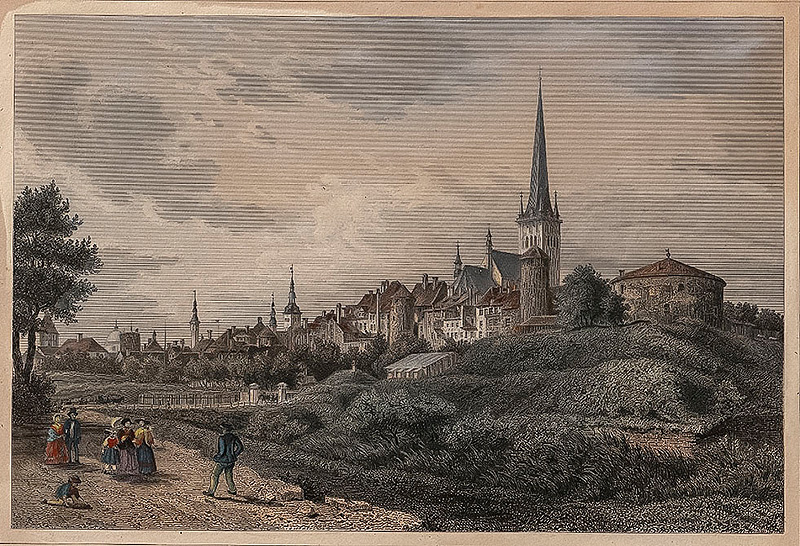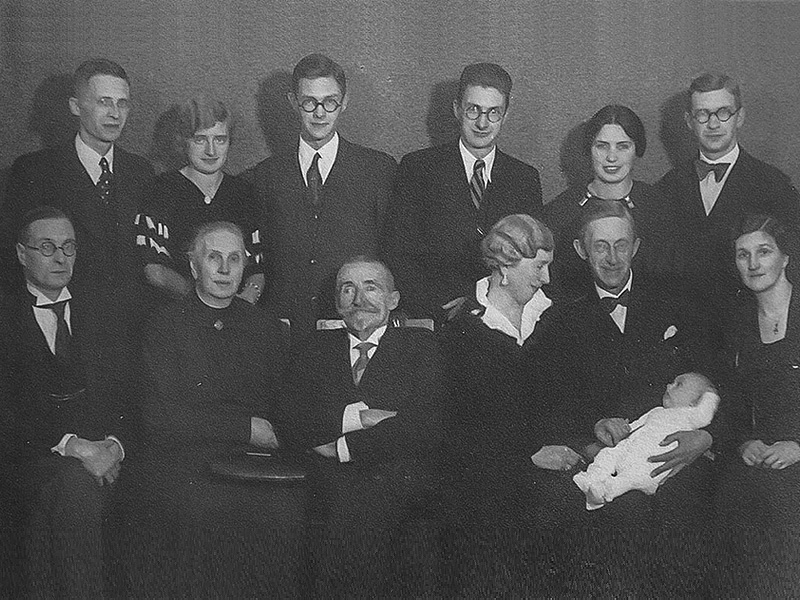About Us

The Revaler patrician family Riesenkampff and its German-Baltic history
The German-Baltic Riesenkampff family originated from Hildesheim in Lower Saxony, where they had freedom of the city and owned property.
From there, the brothers Heinrich and Hans Riesenkampff emigrated to the Hanseatic city of Tallinn (Reval) in the 16th century. The younger brother Hans married into respectable merchant families in Tallinn (Reval) a total of three times, having nine children. Both Heinrich and Hans were members of the Brotherhood of the Blackheads of Reval and subsequently, after their marriage, members of the Great Guild of Reval, This was the professional organisation of the city’s influential and wealthy merchants. Heinrich’s youngest son Heinrich was killed in 1602 during the Polish-Swedish War in the battle on Antonisberg in defence of Reval against Polish troops.
While the first members of the family were merchants, their professional activities soon expanded to include military officers, doctors, lawyers, landowners and administrators.
Indeed, the Swedish general Adam Ludwig Graf Lewenhaupt alone lists four members of the von Riesenkampff family as Swedish officers in his work “Karl XII:s Officerare”, this being written about the officer corps of the Swedish army in the Nordic War (1700 to 1721). Later still, and indeed up until the end of the First World War, various other senior Imperial Russian officers and generals, often in Guard or Cossack regiments, were added to this distinguished list. For example, another Riesenkampff, Alexander Yegorovich, a military doctor, was a close friend of the famous Russian writer Dostoevsky, indeed allowing Dostoevsky stay with him for a time in St. Petersburg in the early 1840s, while the latter studied at the prestigious Military Engineering University before receiving his lieutenant’s commission. Subsequently, Alexander Yegorovich also made a name for himself as a botanist.
In the 17th and 18th centuries, a total of nine ennoblements including two name changes took place in the various family lines.
In 1687 a Riesenkampff was ennobled as a Swedish cavalry captain and henceforth called himself “von Rosenkampff”. This line later received the Finnish baronial title, so that in the early 19th century a Baron von Rosenkampff became known in Finland as “Koski Parun” (Rapids Baron), as he was instrumental in the construction of the Imatra Canal. This branch of the family was based in Sweden, Livonia and Finland. Another Riesenkampff was awarded a Roman Imperial title for his services as an imperial Russian officer in the Seven Years’ War calling himself “von Rehekampff”. This branch of the family lived in Ösel (Saaremaa) and Bessarabia (today Moldavia). All other family lines were also ennobled (Russian service nobility and Saxon imperial vicariate nobility), but as Revaler Hanseaten and patricians they mostly refrained from using the suffix of the name.
Until the introduction of the Russian magistrate’s constitution in 1878, the previously mentioned Great Guild was responsible for representing the municipality and citizens of Tallinn (Reval). Ultimately, the Riesenkampff family was to provide a total of 21 guild members between 1575 and 1909. Indeed, the last councillor of the city who was still elected according to the old Lübian constitution was Justus Riesenkampff in 1876, while the last German-speaking deputy mayor of the city was Carl-Alexander Riesenkampff in 1918.
Another Riesenkampff, Nikolai Alexandrowitsch von Riesenkampff (gen. von Rehekampff), a lieutenant general and commander of the 5th Cavalry Division, clashed with an aide-de-camp of the Tsar in 1892 to such an extent that both finally resigned from the service. He died in Greece in 1904 and is buried in the Russian cemetery in Piraeus. Other family members were involved in legal and educational endeavours in Russia and Georgia. For example, one were involved in the liberalization of the codification of the Russian collection of laws as an honorary member of the University of Moscow, while another worked as the educator of the sons of the Russian Grand Duke Mikhail Nikolaevich in Tbilisi. Others became landowners in what is now Poland, one becoming the director of the Imperial Russian Theatre, while another Riesenkampff became a sculptor, co-founding the Museum of Modern Art in Sao Paulo, Brazil. Finally another Riesenkampff married a Pasha who was the Turkish ambassador in Berlin in 1918.
By 1896, other branches of the Riesenkampff family had again settled in Riga and like other German-Baltic families of the time, were engaged in Russian government service in almost every part of the then Russian Tsarist Empire, whether as military or civil servants.
Russification was imposed upon the Baltic States in the course of the Pan-Slavism that emerged in the second half of the 19th century.
Thus, at the University of Dorpat ( Tartu, Estonia, and from 1893 to 1918, Russian Yuriev), which had been largely German-speaking until this time, teaching was only permitted in Russian from 1893, this affecting other universities in the Baltic States similarly.. As a result, many German-Baltic families sent their sons to study in Germany, this being the case for Georg von Riesenkampff from Riga, who began his studies in Leipzig in 1913. There, surprised by the outbreak of World War I, he enlisted as a war volunteer in the Royal Bavarian Jägerregiment 1 (light infantry) in Aschaffenburg and was killed as a German lieutenant in Romania in 1917. Interestingly, other Riesenkampffs, like most German-Baltic families, fought against Germany as loyal subjects of the Tsar as Imperial Russian officers.
After the October Revolution, through the independence of the three Baltic states and the turmoil and heavy fighting of the Russian Civil War, the family remained in the Baltic region.
After Estonian independence, the “Riesenkampff Street” in the centre of Reval was renamed J. Vilmsi Street in 1923. Subsequently, resettled due to the Molotov-Ribbentrop Treaty of 1939, the last Riesenkampff’s finally left the Baltic States, moving mainly to Germany at the end of 1939 to the beginning of 1940. Only Karl-Otto Riesenkampff, a former military doctor, did not relocate to Germany, having been deported by the Soviets and dying in Leningrad in 1955. Since then, no members of the family have resided in the Baltic States, in Russia or in other parts of the former Russian Tsarist Empire with the exception of Poland.
Of the four old traditional and now defunct Baltic fraternities,Curonia, Estonia, Livonia and Fraternitas Rigensis, the last senior in two was a Riesenkampff (Dr. Jürgen Riesenkampff at Corps Fraternitas Rigensis, founded 1823, and Carl-Otto Riesenkampff at Corps Estonia, founded in 1821). Thus, the almost 400-year history of the Riesenkampff family in the Baltic States had come to an end. Ultimately his brief outline of the Riesenkampff’ family history illustrates both the political and historical changes and turmoil of the time in the Baltic States and the Russian Tsarist Empire, as well as how highly mobile some people and families were long before today’s age of globalisation.
